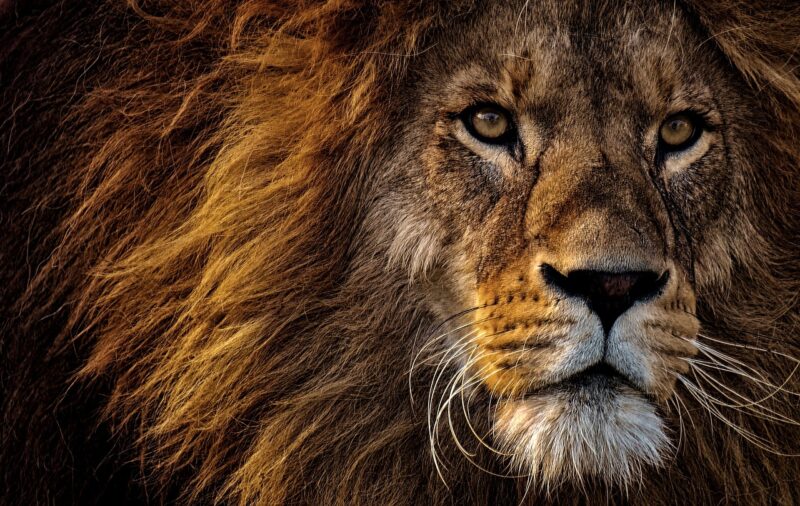The Majestic World of Lions: Exploring the Social Dynamics of the King of the Jungle
November 13, 2024

Lions, often referred to as the “Kings of the Jungle,” are iconic creatures that have fascinated humans for centuries. These majestic animals are not just symbols of strength and power in various cultures but also exhibit complex social behaviors that set them apart from other big cats. In this article, we will delve into the social dynamics of lions, their stunning habitats, and their critical role in the ecosystem. Prepare yourself for an in-depth exploration of the majestic world of lions.
1. The Anatomy of a Lion’s Social Structure
Lions are unique in the big cat family due to their social structure. Unlike solitary felines like tigers or leopards, lions live in groups called prides. A typical pride consists of several related females, their cubs, and a handful of adult males. This social organization offers significant advantages in terms of survival and reproduction.
– Females: Lionesses typically stay with their natal prides and work cooperatively to raise their young. They hunt, nurture, and protect their cubs together, ensuring that the pride’s genetic legacy continues.
– Males: In contrast, male lions often leave their birth prides upon reaching maturity, either to form coalitions with other males or to establish their territories and seek out new prides.
The dynamics of lion social behavior are rooted in cooperation, and their ability to work together significantly influences their hunting success and territory maintenance.
2. Pride Dynamics: Cooperation and Hierarchy
Pride dynamics are fascinating and are governed by a hierarchy that largely revolves around the males and females. While lionesses have critical roles in hunting and nurturing cubs, it is the lion males who protect the pride’s territory from intruders and rival males.
– Cooperative Hunting: Lionesses hunt in groups, using strategies that involve teamwork to bring down prey that is often larger than themselves, such as wildebeests, zebras, or buffalo. This cooperative strategy maximizes the pride’s chances of a successful hunt.
– Territorial Defense: Male lions often engage in fierce battles to defend the pride’s territory from rival males. Dominant males will typically maintain their hold on a pride for several years before being challenged and potentially dethroned.
Hierarchy within the pride can also dictate mating opportunities. Only the dominant male (or males) of the pride will typically breed with the lionesses, ensuring that their genes are passed on to the next generation.
3. Communication Among Lions: Roars, Growls, and Body Language
Lions have a vast array of communication methods that play a crucial role in maintaining pride cohesion and territorial boundaries.
– Roaring: The lion’s roar is one of its most powerful communication tools. It can be heard up to five miles away and serves multiple purposes, including asserting dominance over territory and signaling to pride members. Roaring can also deter rival prides from encroaching on their territory.
– Vocalizations: Besides roars, lions communicate using growls, grunts, and chuffs to convey different messages, from aggression to affection.
– Body Language: Lions also use body language subtly. The positioning of ears, tail movements, and posture can convey feelings of aggression, submission, excitement, or playfulness within the pride.
Understanding these communication methods is vital for the pride’s survival and cohesion, allowing lions to navigate their social landscape effectively.
4. Cubs and Learning the Ropes of Pride Life
Lion cubs are born into a world of cooperation and competition, and their early experiences shape their future roles within the pride.
– Nurturing and Protection: Lionesses will keep their cubs hidden for the first few weeks, protecting them from threats. Once they are old enough, they introduce them to the rest of the pride.
– Play as Learning Tool: Cubs engage in play, which is crucial for developing essential skills such as stalking, pouncing, and fighting. Learning through play prepares them for real-life challenges as they mature.
– Independence: As they grow, cubs slowly learn to participate in hunts and engage with other pride members. This gradual transition is crucial for their integration into adult pride life.
Caring for multiple cubs collectively enhances survival rates, ensuring a strong continuation of the pride’s lineage.
5. The Threats to Lion Populations: Conservation Challenges
Despite their iconic status, lions face numerous threats that have significantly impacted their populations. Over the last century, the population of lions has diminished dramatically due to habitat loss, poaching, and human-wildlife conflict.
– Habitat Loss: Expanding agriculture and urbanization reduce the natural habitats essential for lion survival. Maintaining their territories is increasingly challenging, leading to more frequent confrontations with humans.
– Poaching: Lions are often hunted for their body parts and trophies, fueling illegal wildlife trade.
– Human-Wildlife Conflict: As human populations encroach on lion territories, conflicts arise, leading to retaliatory killings of lions from farmers trying to protect their livestock.
Conservation efforts are crucial to ensuring lions have a place in the future of our world. Initiatives that promote coexistence between humans and lions, alongside habitat preservation, will be key to their survival.
Conclusion: The Enduring Legacy of Lions
Lions are more than mere symbols of strength; they embody a rich tapestry of social dynamics, family structures, and cooperative behaviors that are vital for their survival. Understanding the intricate relationships among pride members and the challenges they face can help us promote effective conservation efforts. As we continue to marvel at these creatures, it becomes increasingly important to ensure they thrive in the wild through sustained conservation efforts, allowing future generations to experience the majestic world of lions.
With their remarkable social structures and behaviors, lions remind us of the complexity of life in the animal kingdom and the necessary balance that must be maintained for the health of our planet’s ecosystems.








